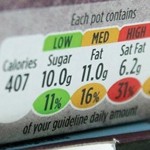Traffic light labels will ‘damage the food industry’

After months of consultations, the DoH chose the hybrid approach after research found consumers were confused by the way retailers displayed levels of salt, sugar fat and calories in their products.
The Provision Trade Federation (PTF) feared that products such as cheese, full-fat milk, sausages and bacon will be incorrectly seen as junk foods under the new system, and sales will fall as a result.
Clare Cheney, PFT director general, told FoodManufactre.co.uk:“These labels mean that people will see foods like cheese as having no nutritional benefits at all. Cheese will be painted with the same brush as indulgent foods, that you should only have on a rare occasion. You can eat cheese everyday and be fine.”
Whole milk and cheese are high in saturated fat and would be labelled red to point this out. Processed meat such as sausages and bacon will also carry a red label, reflecting their salt and fat content.
Hybrid labels
Industry experts worried that the hybrid labels did not point out that these products are essential as part of a healthy balanced diet.
“Traffic lights will not help an individual achieve a healthy diet. People are going to avoid saturated fat, this is wrong; saturated fats are essential in life. If people avoid red lights, what this is going to do is lead to a lack of balanced diets,” said Cheney.
But campaign group Sustain said these labels were essential in helping shoppers to make informed decisions.
Charlie Powell, director of campaigns at Sustain, said: “They are a great educational tool for both adults and children. You can look into your basket and see in clear colours how healthy your shopping is. It is not about demonising certain foods by marking them as red, it is about providing shoppers with as much help as possible to eat healthy.”
Sustain hoped the traffic light labels will help consumers and drive a reformation by the industry.
Name and shame
The group has called on the government to name and shame retailers or manufacturers that do not adopt the system, Powell said: “We would not hesitate to see them named and shamed, obviously not immediately, but in due course.
“They must not drag their feet and the government shouldn’t let them. It does not take long to make a commitment and over the next few weeks we would like to see manufacturers and retailers place their support in traffic light labels.”
Morrisons last month said it would adopt the hybrid front of pack nutritional labelling system if the government called for it.
They were the last of the big four supermarkets to adopt the system, following Tesco’s announcement in September that it will also use the hybrid system.
Sainsbury
Sainsbury was the first supermarket to introduce front of pack labelling combining GDAs and traffic lights in January 2005. Asda has used the same system since 2007, Waitrose, The Co-Operative, Lidl and Marks & Spencer have all adopted traffic lights, as well as GDAs.
Iceland is the only supermarket chain not to adopt the system.
Richard Dodd, head of media and campaigns at the British Retail Consortium (BRC) said: “It has been clear that our members have changed their position over time. They have been lining up behind the hybrid scheme, this is something they have done as part of an understanding of consumers needs.”
Dodd said the BRC would not be putting any pressure on Iceland to adopt the system, adding: “We would leave it to individual retailers to make their own decisions.”
Industry members, including the BRC and PTF, will meet with the DoH tomorrow evening (October 25), when it is believed they will discuss exactly what the harmonised label will look like.
Dodd said: “We will be attending the meeting under the intention that this is on the agenda and up for discussion. There will be discussions and more information revealed.
“Food labelling is being reviewed at EU level; we need to make sure that any change we make will comply at that level.
A spokeswoman for the DoH said: “The hot topic on Thursday is exactly what the label will look like.”
The new labels will be in place by next summer.















